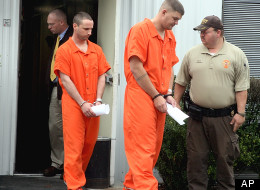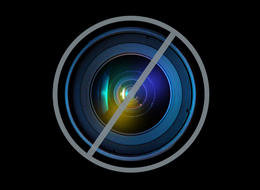An American man wrongfully convicted of rape almost 30 years ago has lost his battle to file a lawsuit against the police officers involved in a case that kept him in prison for two decades.
A federal appeals court has decided to agree with an earlier ruling that will keep Johnny Briscoe from filing claims against the law enforcement agents who he says violated his constitutional rights.
Briscoe was sentenced to 45 years in prison after being found guilty of committing a rape in St. Louis, Missouri in 1982. In 1997, Briscoe asked for the District Attorney to produce crime scene evidence that he said would clear his name with the aid of modern forensic technology. For nearly a decade after, though, the objects in question — cigarettes found at the scene of the crime that contained the DNA of the actual criminal — were lost among officials. The butts were eventually discovered in 2004, although not handed over to the DA until 2006. Only days after the District Attorney’s office received the evidence, testing was completed and Briscoe was exonerated, but not before having already served 23 years in prison for Forcible rape, sodomy, burglary, robbery, stealing and armed criminal action.
In the seven years since his release, Briscoe has attempted to take legal action against St. Louis County police officers Lane Hollandsworth, Stephen Deen and Jack Webb. His attorneys have claimed that the defendants violated their client’s constitutional rights by not just convicting him without presenting undeniable evidence, but by prolonging his exoneration — it took officials more than six years to produce the crime scene evidence that eventually led to his release.
Briscoe’s attorneys call the police-led investigation reckless and one that involved blatant withholding of exculpatory evidence. The defendants were granted summary judgment by a federal court, though, which the appellate court announced it was in agreement with this week, removing any chances Briscoe had of receiving justice.
At the center of the attorneys’ argument was the use of police line-ups to identify Briscoe during the early days of the rape trial. When labeled by the victim as the culprit behind the crime, Briscoe was the only suspect clad in an orange jump suit. Nevertheless, the appeals court wrote this week that the legal attempts at persecuting Briscoe for the crime were in full compliance with the US justice system.
"Even assuming Hollandsworth caused some degree of suggestiveness in the photo lineup, it did not violate Briscoe's constitutional rights," Judge Duane Benton wrote, as reported by Courthouse News Service. A three panel appellate judge added in their ruling that the identifying of Briscoe in a police line-up, “showed sufficient indicia of reliability to be admitted at trial without causing 'a violation of the core right – the right to a fair trial.'”
The victim, the judges wrote, “had ample opportunity to view her attacker during the prolonged and well-lit encounter.”
“She focused on his face in order to identify him later,” the ruling continues, adding that the victim, “expressed complete confidence in her identification, which she made immediately upon viewing Briscoe's photo.”
“It is undisputed that at that time – six weeks after the attack – the rape investigation was considered complete, she had positively identified the same suspect in two lineups, and that suspect was in jail awaiting trial," Benton writes. "The investigators were not seeking additional suspects."
http://rt.com/usa/news/wrongfully-briscoe-rape-years-090
A federal appeals court has decided to agree with an earlier ruling that will keep Johnny Briscoe from filing claims against the law enforcement agents who he says violated his constitutional rights.
Briscoe was sentenced to 45 years in prison after being found guilty of committing a rape in St. Louis, Missouri in 1982. In 1997, Briscoe asked for the District Attorney to produce crime scene evidence that he said would clear his name with the aid of modern forensic technology. For nearly a decade after, though, the objects in question — cigarettes found at the scene of the crime that contained the DNA of the actual criminal — were lost among officials. The butts were eventually discovered in 2004, although not handed over to the DA until 2006. Only days after the District Attorney’s office received the evidence, testing was completed and Briscoe was exonerated, but not before having already served 23 years in prison for Forcible rape, sodomy, burglary, robbery, stealing and armed criminal action.
In the seven years since his release, Briscoe has attempted to take legal action against St. Louis County police officers Lane Hollandsworth, Stephen Deen and Jack Webb. His attorneys have claimed that the defendants violated their client’s constitutional rights by not just convicting him without presenting undeniable evidence, but by prolonging his exoneration — it took officials more than six years to produce the crime scene evidence that eventually led to his release.
Briscoe’s attorneys call the police-led investigation reckless and one that involved blatant withholding of exculpatory evidence. The defendants were granted summary judgment by a federal court, though, which the appellate court announced it was in agreement with this week, removing any chances Briscoe had of receiving justice.
At the center of the attorneys’ argument was the use of police line-ups to identify Briscoe during the early days of the rape trial. When labeled by the victim as the culprit behind the crime, Briscoe was the only suspect clad in an orange jump suit. Nevertheless, the appeals court wrote this week that the legal attempts at persecuting Briscoe for the crime were in full compliance with the US justice system.
"Even assuming Hollandsworth caused some degree of suggestiveness in the photo lineup, it did not violate Briscoe's constitutional rights," Judge Duane Benton wrote, as reported by Courthouse News Service. A three panel appellate judge added in their ruling that the identifying of Briscoe in a police line-up, “showed sufficient indicia of reliability to be admitted at trial without causing 'a violation of the core right – the right to a fair trial.'”
The victim, the judges wrote, “had ample opportunity to view her attacker during the prolonged and well-lit encounter.”
“She focused on his face in order to identify him later,” the ruling continues, adding that the victim, “expressed complete confidence in her identification, which she made immediately upon viewing Briscoe's photo.”
“It is undisputed that at that time – six weeks after the attack – the rape investigation was considered complete, she had positively identified the same suspect in two lineups, and that suspect was in jail awaiting trial," Benton writes. "The investigators were not seeking additional suspects."
http://rt.com/usa/news/wrongfully-briscoe-rape-years-090






